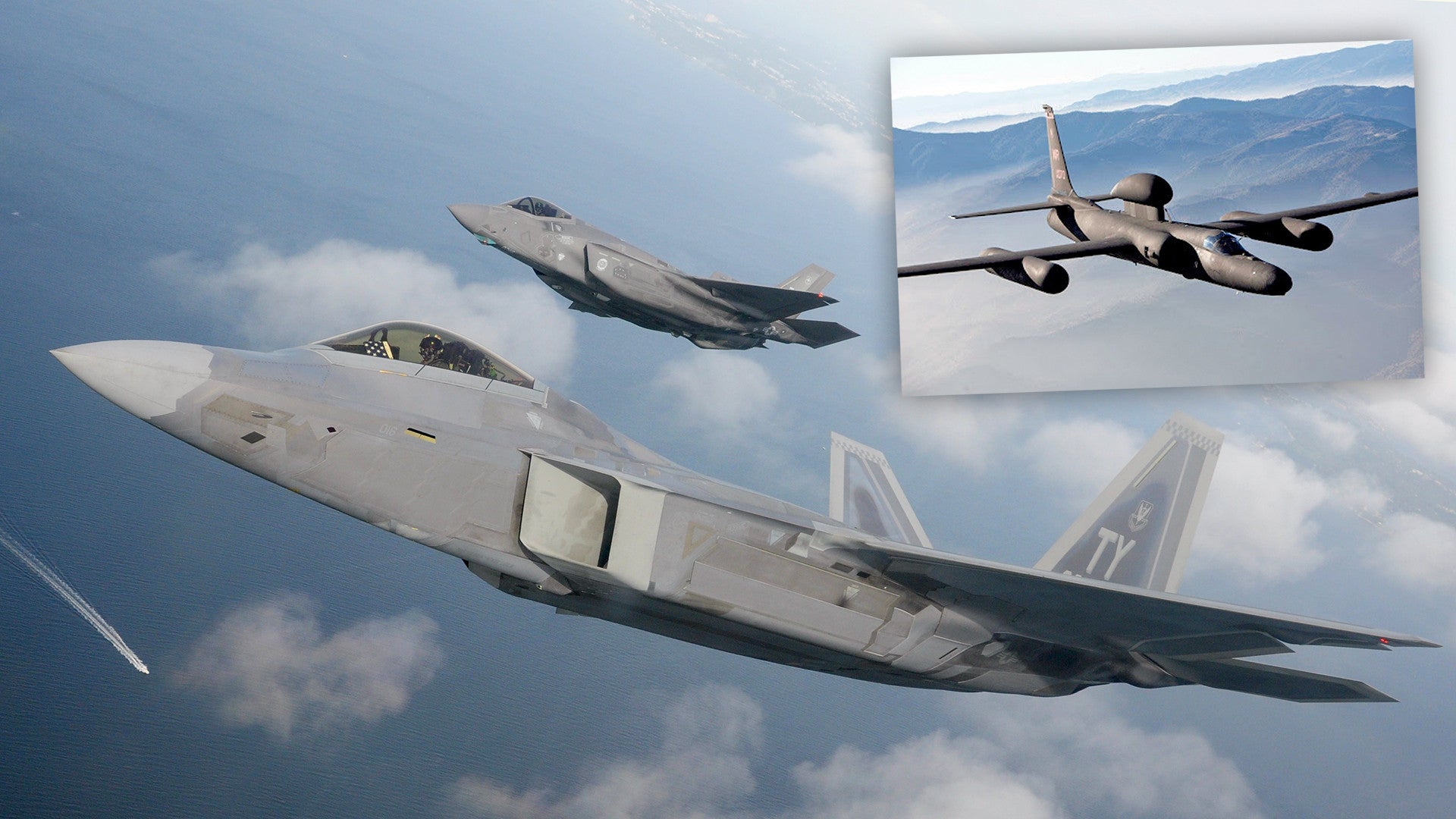Five F-35A Joint Strike Fighters and a single F-22 Raptor “talked” with each other using their proprietary stealthy datalinks via a U-2S Dragon Lady spy plane carrying a specialized communications gateway payload, during a recent demonstration. This marks the first time that the Air Force’s two stealth fighters were able to exchange data freely in flight, something that has been years in the making. The U-2 was also able to simultaneously share information with assets on the ground and at sea, as well as with non-stealthy combat aircraft, all in near-real-time. That info was used to initiate strikes from ground-based artillery and naval assets as part of the high-stakes capability demonstration.
This demonstration event was known as Project Hydra. The company’s Skunk Works advanced projects division worked together with the Air Force and the Missile Defense Agency (MDA) to carry out the tests. Elements of the U.S. Army and U.S. Navy were also involved.
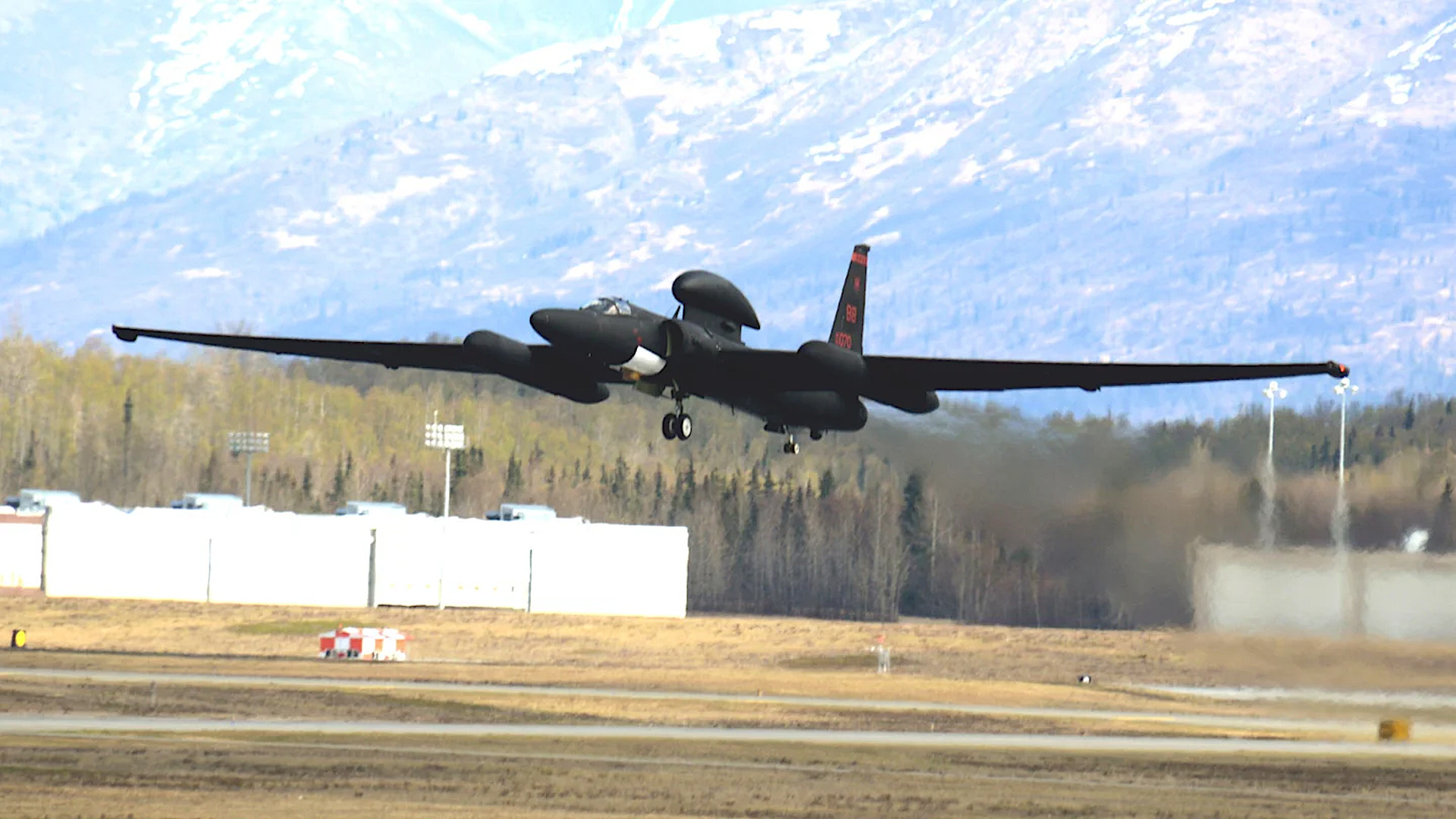
“Project Hydra marks the first time that bi-directional communications were established between 5th Generation aircraft in-flight while also sharing operational and sensor data down to ground operators for real-time capability,” Jeff Babione, Vice President and General Manager of Skunk Works, said in a statement. “This next-level connectivity reduces the data-to-decision timeline from minutes to seconds, which is critical in fighting today’s adversaries and advanced threats.”
During this particular test, the F-35As and the F-22 carried out an unspecified set of tasks while communicating with each other using their Multifunction Advanced Data Link (MADL) and Intra-Flight Data Link (IFDL), respectively. This included sending “target tracks … by and through the U-2 into the fighter avionics and pilot displays,” according to Lockheed Martin.
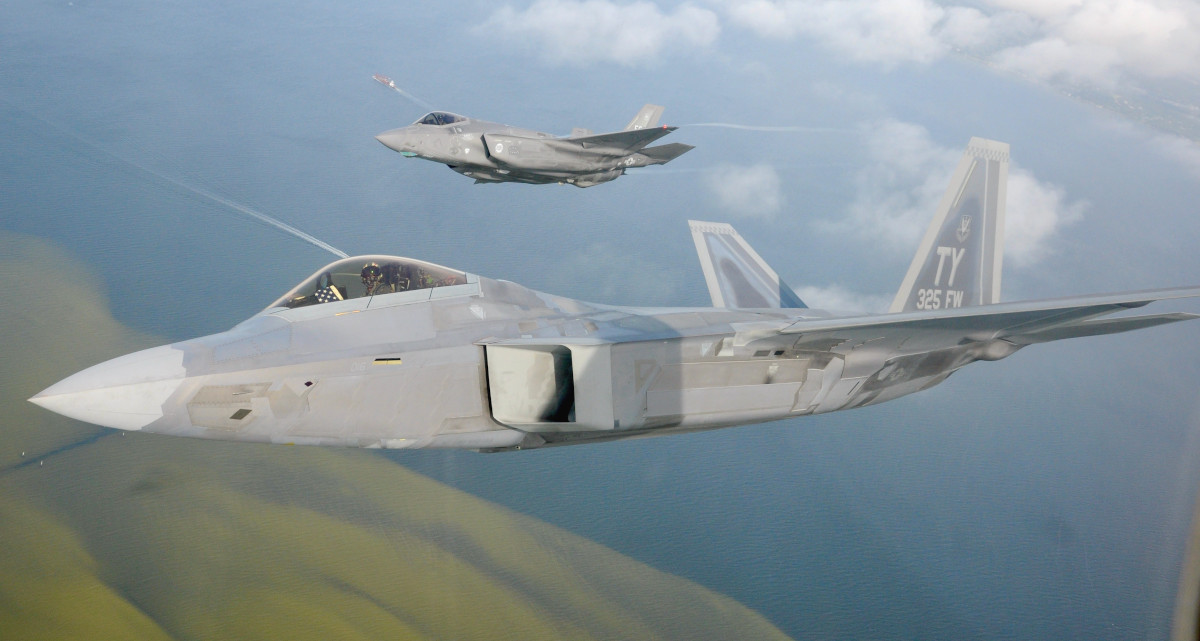
All three variants of the Joint Strike Fighter use MADL, which is also slated to be used on the future B-21 Raider stealth bomber, while IFDL is unique to the Raptor. MADL and IFDL use distinct waveforms that are not directly compatible. So, during this demonstration, the U-2S, carrying what Skunk Works described as an “Open Systems Gateway,” or OSG, and as the “Hydra payload,” acted as the ‘translator’ between the two data links. At the core of the Hydra OSG is an “Open Mission Systems (OMS) compliant Enterprise Mission Computer 2 (EMC2).” The EMC2, colloquially known as the “Einstein Box,” is an advanced open-architecture mission computer designed to rapidly integrate new and improved functionality.
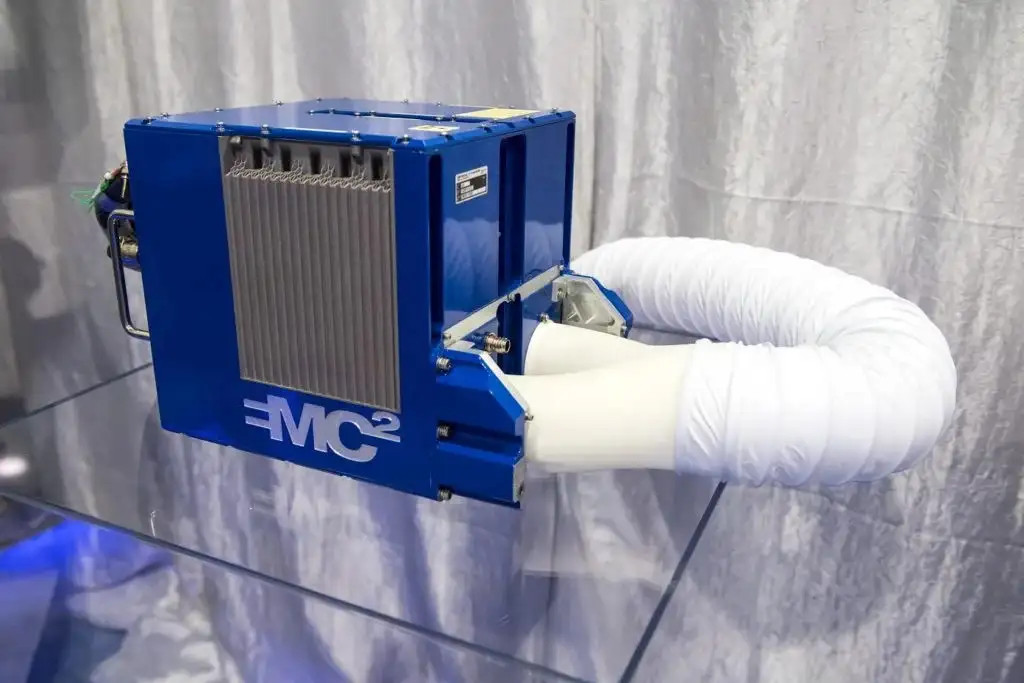
The MADL and IFDL systems are both designed to be low probability of intercept/low probability of detection (LPI/LPD) systems that enable F-35 variants and the F-22 to communicate while still remaining as stealthy as possible and their highly directional broadcasting concepts make them extremely difficult to jam. F-35s can send information to F-22s directly via Link 16, a far more widely adopted waveform. However, doing so would increase the likelihood of an enemy being able to spot and track the aircraft via those emissions, which are omnidirectional and not very LPI/LPD in nature.
This communications method would be of limited utility for connecting the two types of aircraft, anyways, since the Raptors cannot send information back out via Link 16. All told, MADL and IFDL being able to “talk” to one another, even via a gateway, is an extremely important capability and one that the Air Force has been pursuing for years now.

The Hydra OSG does also have the ability to transmit information across Link 16, a capability that was also a component of this recent demonstration. This would allow the F-22 and F-35’s data to become available to 4th generation fighter assets, such as the F-16C/D Viper, the F-15E Strike Eagle, or the Air Force’s new F-15EX Eagle II, for enhanced battlespace awareness.
In addition, the Hydra OSG used a Tactical Targeting Network Terminal (TTNT) data link, also known as the Tactical Targeting Network Technology, a system first employed on the U.S. Navy’s EA-18G Growler electronic warfare aircraft and that is set to be integrated into that service’s Block III F/A-18E/F Super Hornets, to send information to nodes on the ground and at sea. Notably, the TTNT link enabled the U-2S’s communications payload to link into an Airborne Sensor Adaptation Kit (A-Kit) that was part of the U.S. Army’s Integrated Battle Command System (IBCS). Northrop Grumman is the lead contractor for IBCS, but Lockheed Martin is also involved in that program and developed the Airborne Sensor A-Kit.
IBCS, which you can read about in more detail here, is a distributed architecture that the Army is in the process of fielding, initially for connecting air and missile defense assets, but which take a more general networking function for that service as time goes on. Project Hydra in fact featured a demonstration of the potential broader role for IBCS with the U-2S passing along sensor data from the F-35As to the IBCS Tactical System Integration Laboratory (TSIL) at Fort Bliss in Texas via this system.
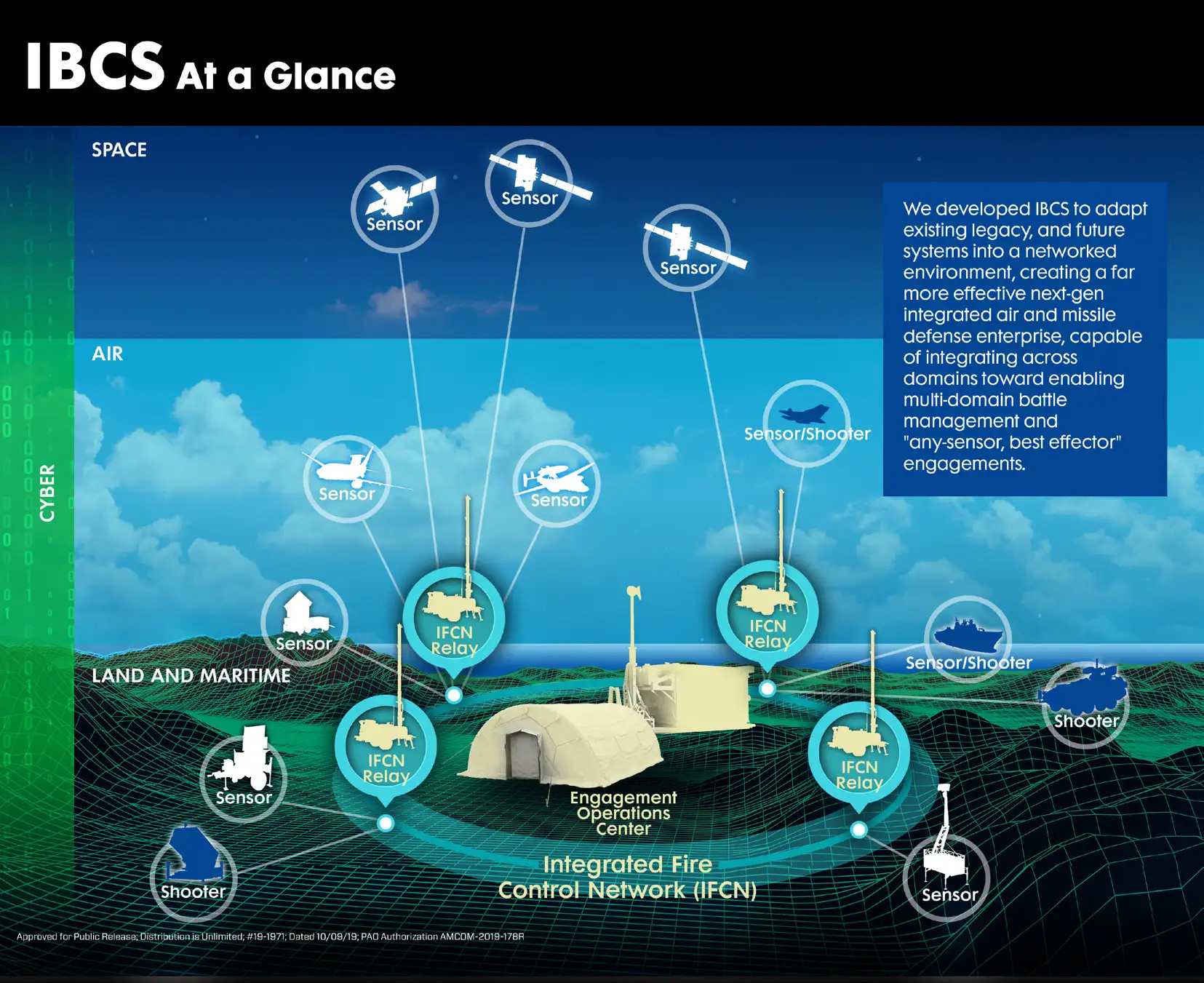
From there, that information was used to carry out “a simulated Army fires exercise,” Lockheed Martin said. This is not the first time the Air Force and the Army have demonstrated how F-35As could cue ground-based artillery and missile units to targets deeper inside enemy territory. Unspecified “naval fires,” a term typically used to describe missiles fired from surface warships or submarines, using data sent via the gateway on the U-2S, were also carried out as part of the demonstration.
“By leveraging both line-of-sight (LOS) and beyond line-of-sight (BLOS) datalink capabilities of the U-2, data can now be shared directly to tactical users and globally to command and control (C2) nodes like the Common Mission Control Center (CMCC),” Lockheed Martin’s press release added. “During this demonstration, both the CMCC and Shadow Operations Center at Nellis Air Force Base were able to view the sensor and platform data to enable situational awareness for operational command and control of highly capable air assets.”
The Air Force has an expanding network of CMCCs, which are advanced command and control and data fusion centers. Artificial intelligence and machine learning are major components of the program, with the general goals being to speed up the flow of information and otherwise improve the overall efficiency of these centers, while also reducing the workload on individual personnel. The service has also stressed in the past that the CMCCs are particularly geared toward supporting operations “in contested environments.” Basically, the idea is giving key decision-makers a God’s eye view of the battlespace and where the enemy is and where allied assets are, even stealthy ones, at all times.
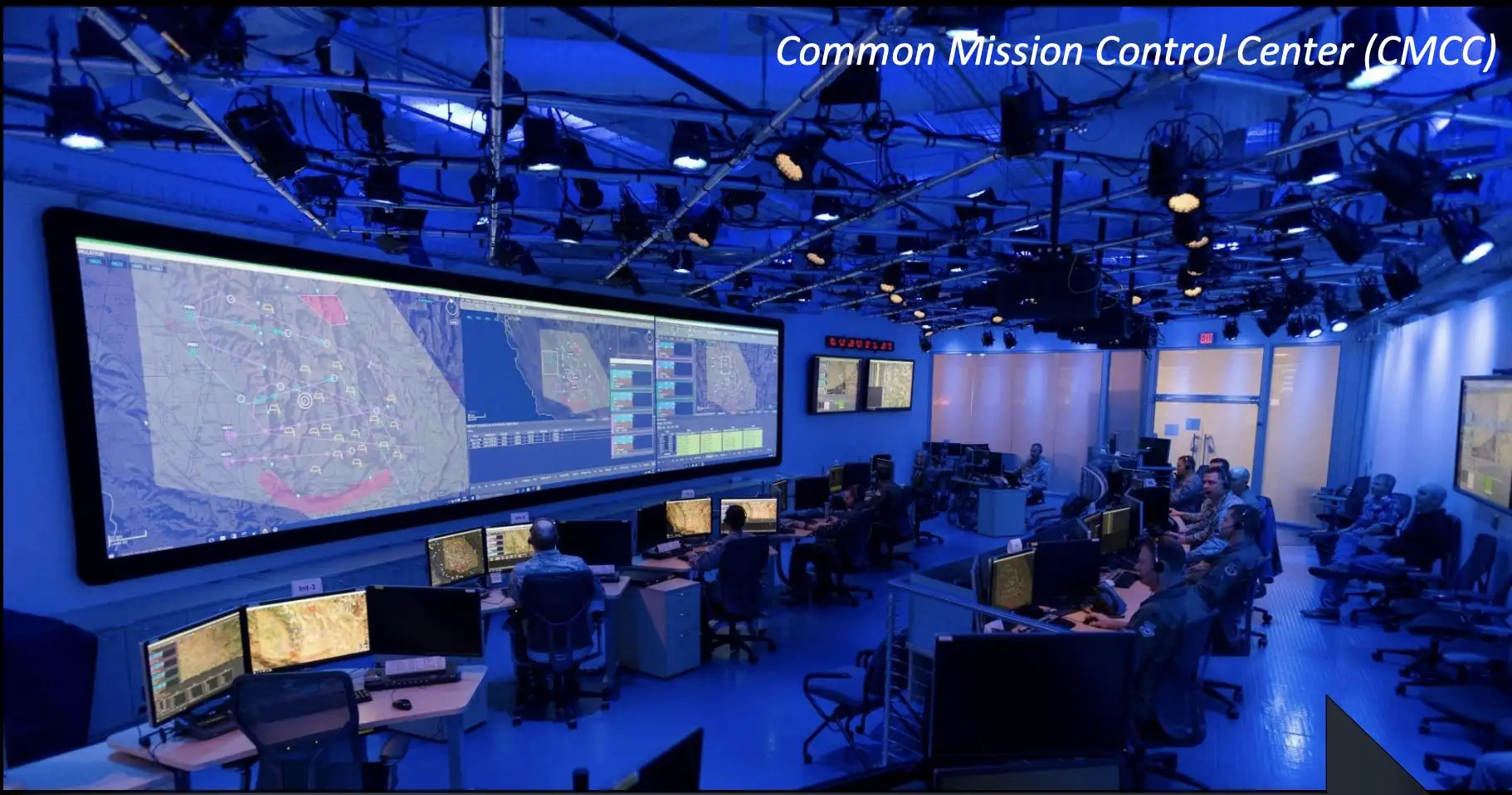
The Shadow Operations Center-Nellis (ShOC-N), which is operated by the 805th Combat Training Squadron, is a “focal point for experimentation, rapid development, and test support for Joint All-Domain Command and Control (JADC2) technical solutions and tactics, techniques, and procedures (TTPs) for the Multi-Domain Operations Center (MDOC) of the future,” according to the Air Force. JADC2 is the current term for a U.S. military-wide concept focused on integrated networking and associated capabilities, especially ones leveraging advances in artificial intelligence and machine learning. The Air Force, Army, and Navy components of that larger effort are known as the Advanced Battle Management System (ABMS) program, Project Convergence, and Project Overmatch, respectively. The Project Hydra press release specifically said that “this demonstration is another key step forward in Lockheed Martin’s support” for ABMS and Project Convergence, but did not mention Project Overmatch.
Lockheed Martin’s Skunk Works, the U-2S, and EMC2 have been deeply involved in open mission systems architecture work related to the CMCC and now the ABMS program, since at least 2014. That year, a Dragon Lady equipped with a pre-EMC2 open-architecture computer conducted a test together with a prototype CMCC.
In 2015, as part of a demonstration called Project Iguana, a U-2S was actually outfitted with IFDL data link from an F-22, among other systems, and helped pass information between one of those jets and Navy F/A-18s, as well as nodes on the ground, including a CMCC. Then in 2017 came the public debut of a U-2S carrying the Einstein Box during that year’s iteration of the annual Northern Edge exercise in Alaska, during which the plane served as a communications gateway.

The U-2S’s participation in Northern Edge that year was part of a demonstration also referred to as Project Hunter and involved the plane acting as a gateway for F-22s to receive information sent from non-stealthy fourth-generation F-16C/D Vipers using Link 16. The Dragon Lady also demonstrated its ability to serve as a relay node to send new targeting information to weapons already in flight, enabling the retasking of an AGM-158C Long-Range Anti-Ship Missile (LRASM) after launch during the event.
Then, in 2019, during a test known as Project Riot, the U-2S acted as a communications node, passing data about a simulated ballistic missile launch that an F-35A had detected to a CMCC. That information then got forwarded to other missile defense assets. The ability of the Distributed Aperture System (DAS) found on all F-35 variants to spot and track a ballistic missile launch had been previously demonstrated.
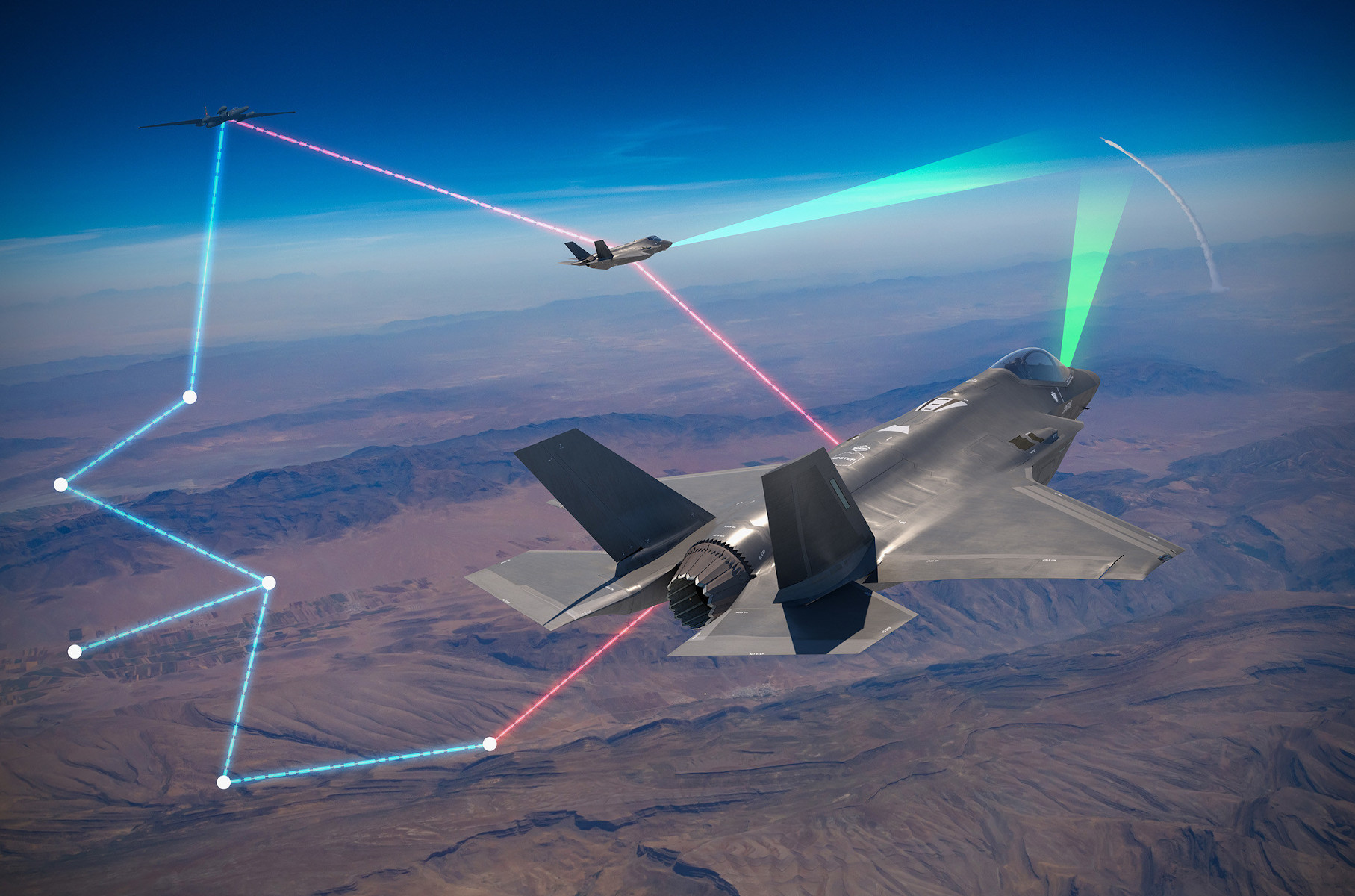
In the past year or so, Skunk Works, in cooperation with the Air Force, has also shown how the EMC2 computer can be utilized to provide advanced and novel capabilities with applications beyond communications and data sharing.
In addition, Lockheed Martin, together with Northrop Grumman, Honeywell has been involved in a number of projects in recent separate from the U-2S to develop systems to allow communication between the IDFL and MADL data links. The most recent of these efforts is called gatewayONE and is part of the Air Force’s current ABMS ecosystem.
The complete gatewayONE system incorporates technology derived from Northrop Grumman’s Freedom series of software-defined radios and the EMC2. “Freedom multifunction, software-defined radios are the heart of the F-22 integrated avionics suite and F-35 communications, navigation, and identification system,” according to Northrop Grumman. That company has been touting the potential of the Freedom 550, specifically, as a translator between IFDL and MADL since at least 2014, when it demonstrated the ability to convert information from both of those into the Link 16 waveform. In addition, a December 2019 paper from the Royal United Services Institute (RUSI), a think tank in the United Kingdom, said that the latest configuration of the Battlefield Airborne Communications Node (BACN) suite at that time also included a Freedom 550 radio “module.” The Air Force presently uses a fleet of manned E-11As, which are modified Bombardier Global Express business jets, and EQ-4B Global Hawk drones to carry the BACN system.
In December 2020, the Air Force conducted a test of the gatewayONE payload, carried aloft inside a stealthy XQ-58A Valkyrie drone. Unfortunately, the service was not able to fully demonstrate the payload’s ability to translate between the F-22 and the F-35A that were also involved in the experiment due to technical difficulties. It’s unclear how related the gatewayONE system may be to the Hydra OSG payload, if at all, beyond that both of them utilize the EMC2 computer.
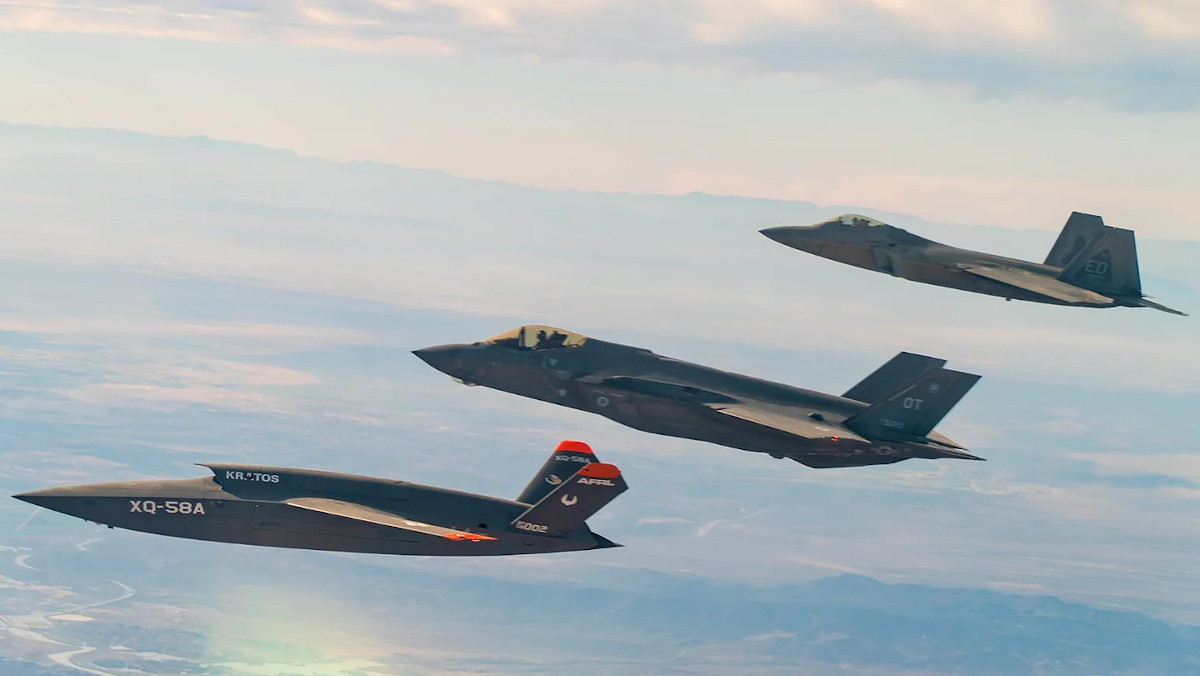
So, what Project Hydra, along with all of these other previous developments, really reflects is a maturing, increasingly expansive and robust battlefield networking ecosystem that goes far beyond just getting IFDL and MADL to talk to each other and using payloads on the U-2S to do it. At the same time, it is an architecture that, in its final form, should demand high-flying gateway nodes to ensure the exchange of all kinds of data over a wide area.
This will be especially important when it comes to supporting stealthy aircraft, including swarms of drones, operating deep into heavily defended battlespaces. The Dragon Lady is, unfortunately, too vulnerable to operate in these kinds of denied environments and The War Zone recently outlined in great detail how these increasing networking requirements mean that it is all but certain that a secretive high-flying stealthy drone, commonly referred to as the RQ-180, or a variant thereof, exists or is being developed to fill this key role.
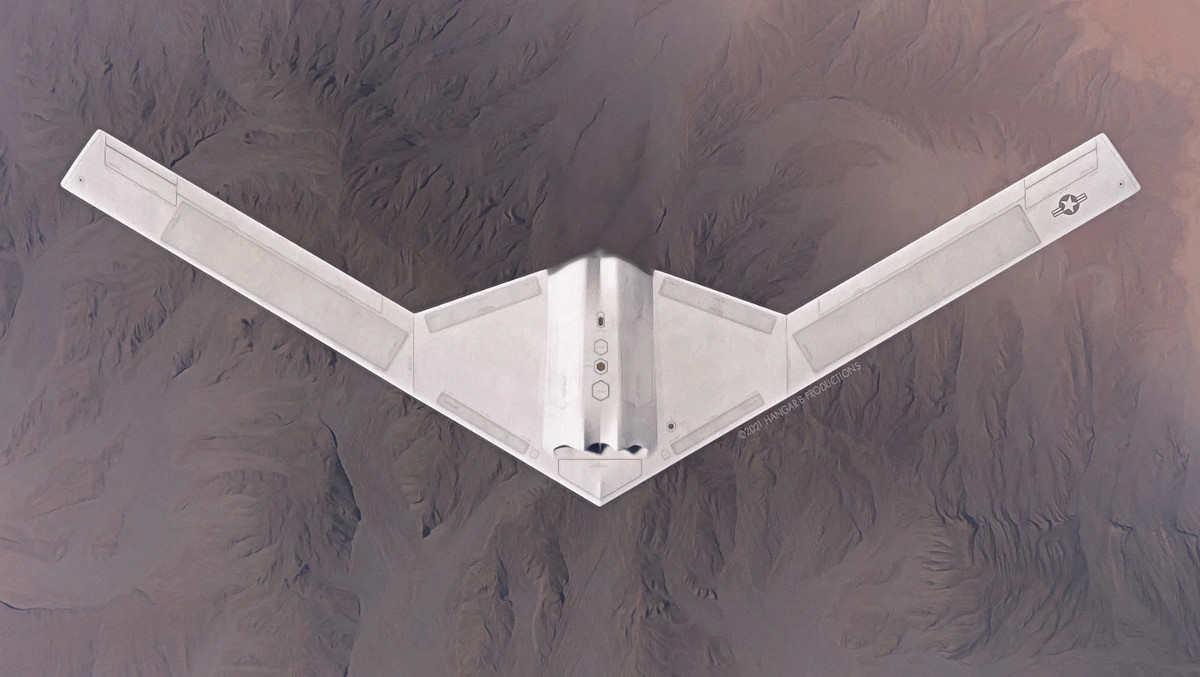
The systems that Lockheed Martin has demonstrated in Project Hydra, as well as the various earlier experiments, are all notably centered more around open-architecture mission computers, rather than the planes carrying them. Lockheed Martin has stressed that the payload involved in this particular event is platform-agnostic rather than being specifically designed to work with the U-2S and only that plane.
So, it not hard to see how these capabilities could be installed, at least in part, with relative ease on other platforms beyond the U-2S. As already noted, the Air Force has already been using the stealthy XQ-58A in tests of the similar gatewayONE system.
While Project Hydra certainly marked an important milestone in being able to get the stealthy datalinks on F-35s and F-22s talking to each other, the program’s success also highlights progress on multiple fronts towards realizing a revolutionary future vision of data-sharing across the Air Force, as well as other branches of the U.S. military, during future conflicts.
Contact the author: joe@thedrive.com and tyler@thedrive.com
